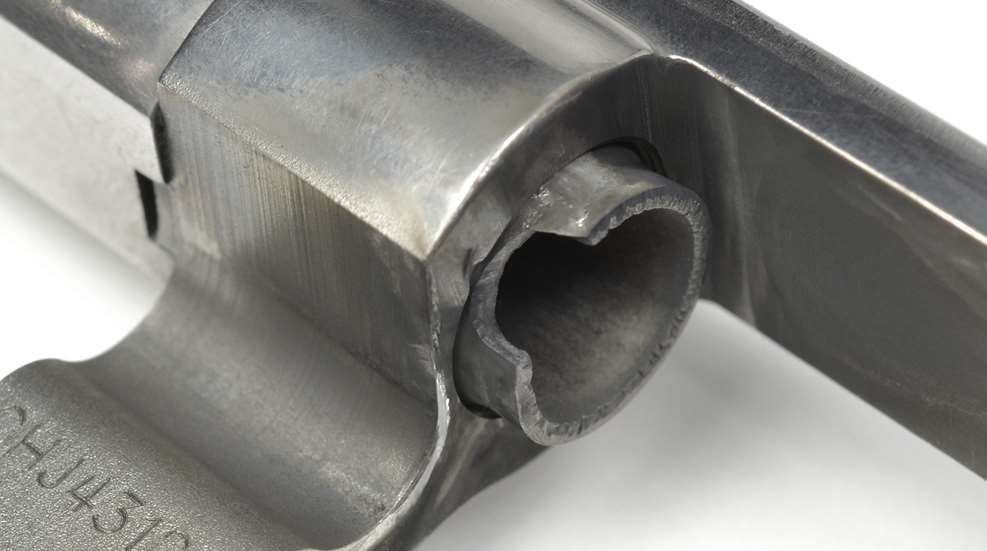
I’m a fan of revolvers. Earlier in life, I carried a revolver on duty, off duty and used them for competitive shooting and hunting small game. As much as I shot them, the round count for any given gun wasn’t that high. None of them wore out. As time went on, I shifted to semi-automatic pistols, and pulling revolver triggers became more of a memory.
Recently, I’ve been paying attention to revolvers again, and with the abundance of information available via the internet, I educated myself on what heavy use will do to a revolver. Somewhat to my surprise, barrels can break.
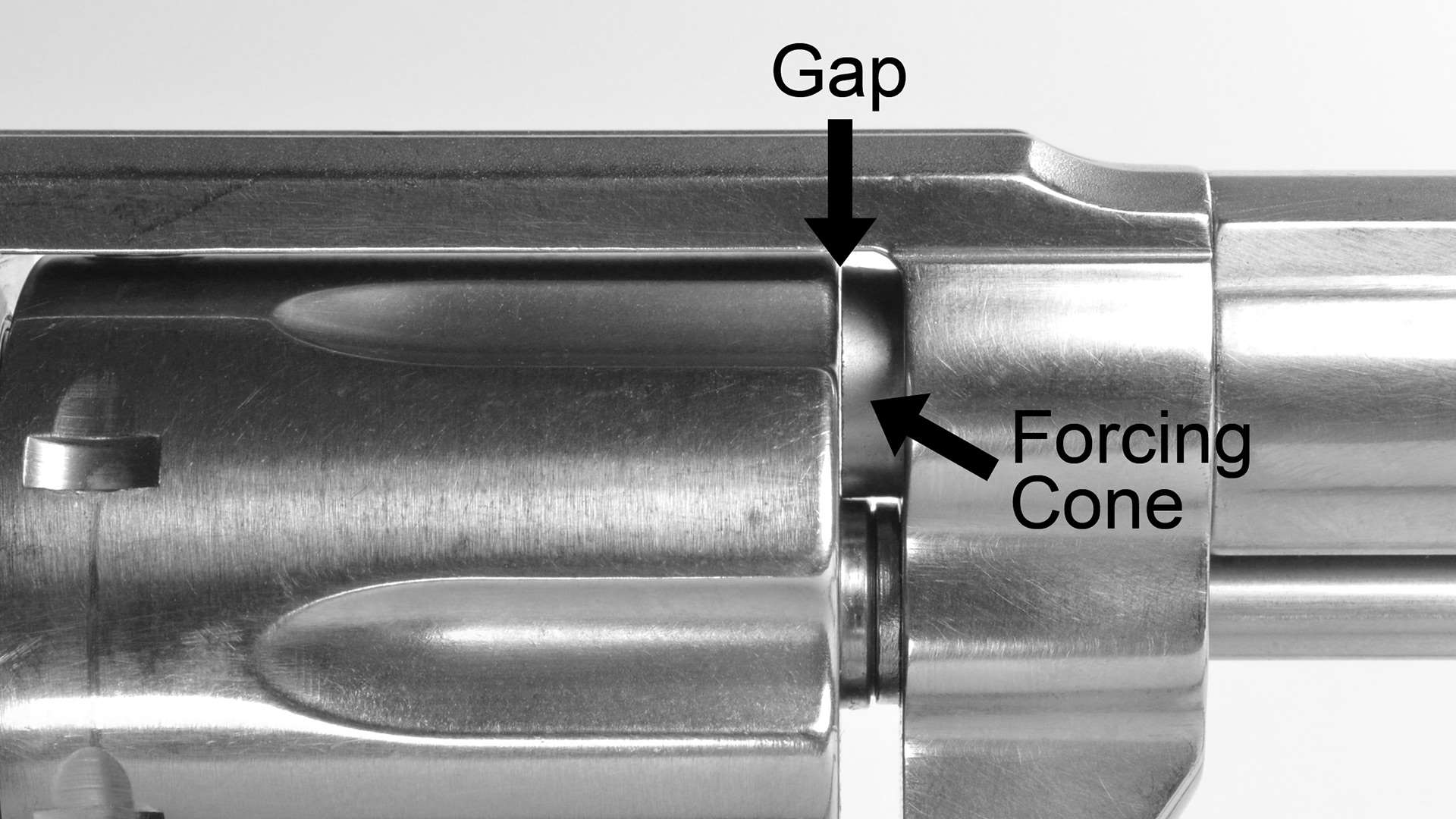
The forcing cone is the place most susceptible to breakage. The forcing cone is the rear entrance of the barrel where the bullet transitions from the cylinder to the barrel. It protrudes into the cylinder window a little, how much varies depending on the model. Gas pressure is extremely high here, a fact you’ll learn the hard way if your hand is anywhere in line with the barrel cylinder gap when the gun fires and gas pressure blasts out from the gap.
Thinner than the barrel, hot gas can gradually eat away at the forcing cone and the high pressure puts tremendous strain on it. Combine the wear and high pressure, and the result is the forcing cone can crack. Some guns are known for being subject to cracked forcing cones. Smith & Wesson K-frame guns, such as the .357 Mag. Model 19, are guilty of this. A steady diet of magnum ammunition takes a toll on them, though a cracked forcing cone is a rare event. Cracked forcing cones are not unique to Smith & Wesson revolvers. An internet search shows the same failure with Ruger, Colt and Taurus wheelguns, too.
A frequent location of cracked Smith & Wesson K-frame forcing cones is a flat-spot machined into the bottom that allows for clearance of the yoke (cylinder) gas ring. This results in a thinner forcing cone wall, making it prone to failure.
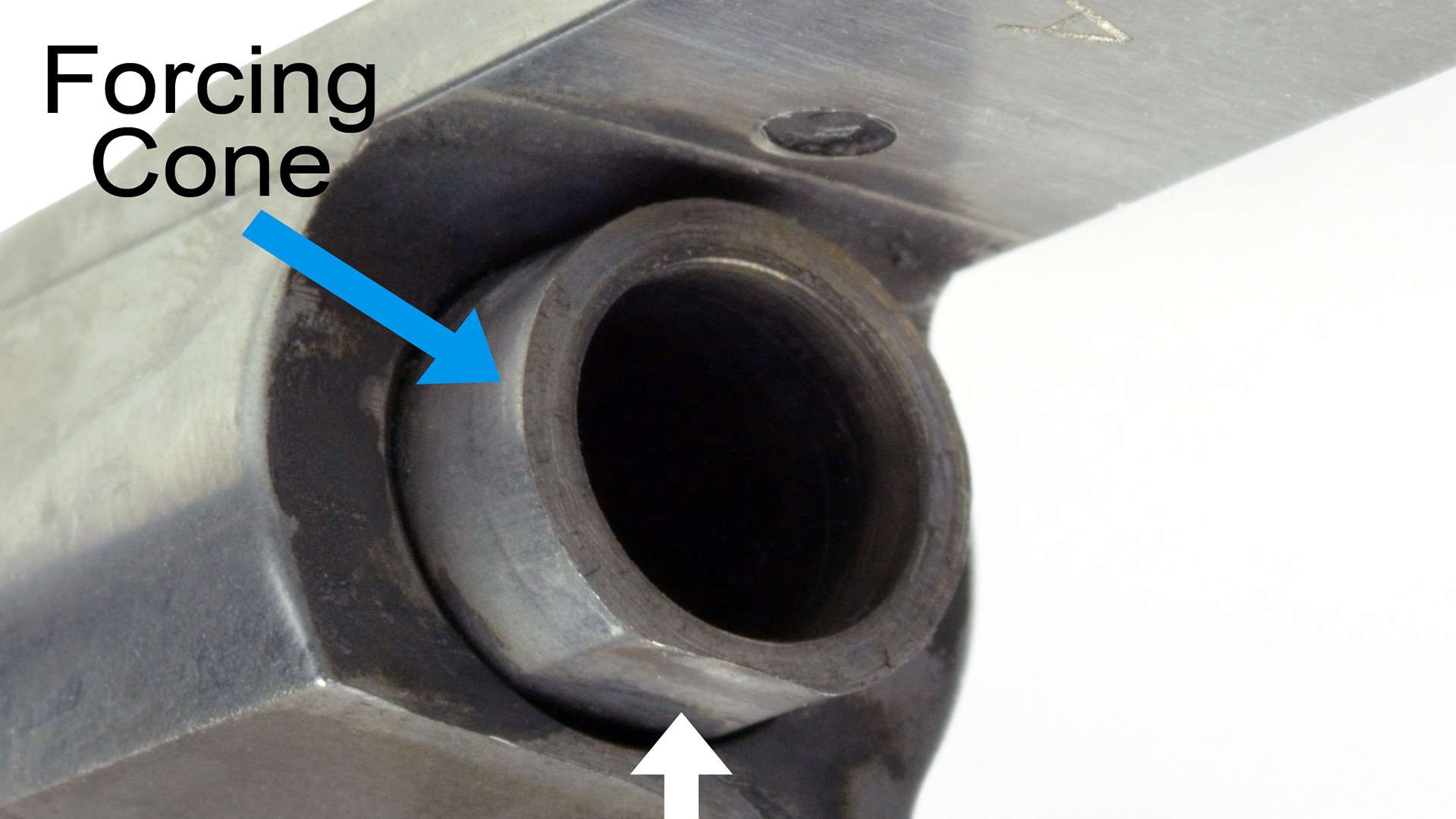
High pressure loads with light bullets are most often blamed for cracked forcing cones. In the case of the .357 Mag., people point their finger at 125-grain (or lighter) full power magnums. But they aren’t the only cause of cracked barrels. Some people have reported this same damage from a steady diet of 158-grain loads, too. And it’s not just magnum ammunition that produces cracks. For instance, someone once reported a cracked forcing cone on a .38 Spl. revolver.
Chamber pressure peaks quickly and occurs for most handgun rounds after the bullet has moved only a very short distance. Quickload ballistic software shows that in the .357 Mag., chamber pressure peaks after the bullet has moved about a half-inch, which is when the bullet is crossing the gap as it transitions between the cylinder and the barrel. The chamber pressure of all bullet weights is in the same range if they are loaded to their full potential, and the gas pressure at the gap is likely the same as well.
Forcing cone thickness varies depending on the gun. Smaller guns tend to have thinner forcing cones. The forcing cone wall thicknesses of several .38 Spl. and .357 Mag. revolvers are provided at the end of this article.
What causes a forcing cone to crack?
Not long ago I experienced a forcing cone failure. I had purchased a used Smith & Wesson Model 65-8 chambered in .357 Mag. Built in 2004, this wheelgun was a law enforcement trade-in. Some police guns get a fair amount of use, while others don’t.
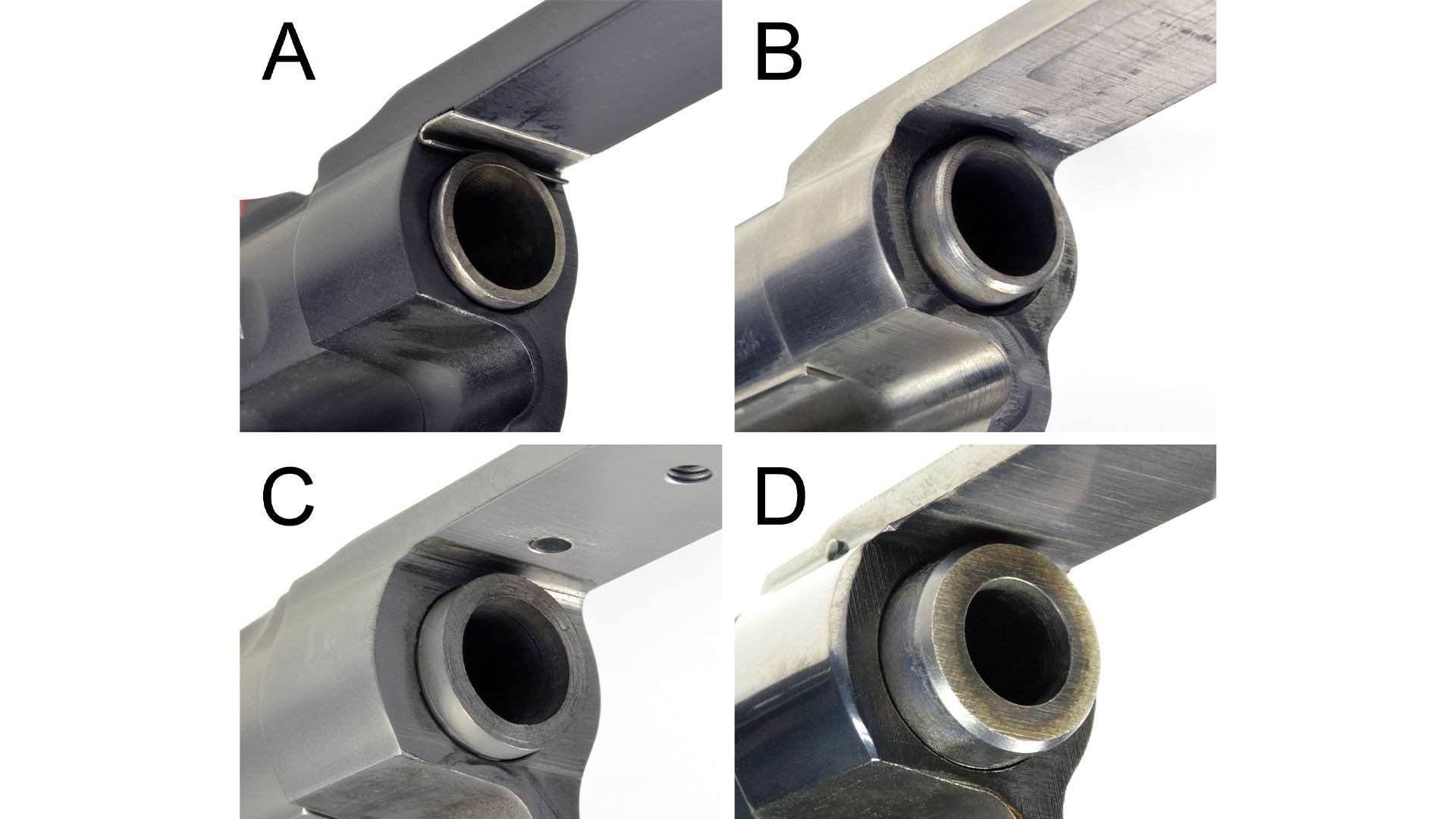
Since I bought the gun over the internet, there was no opportunity to inspect it before the purchase. I wanted to get a better understanding of this gun’s history, so the first thing I did when it arrived was clean it and inspect several areas that can indicate wear.
I was particularly interested in the top strap above the forcing cone, because this is where flame cutting from high-pressure rounds can leave their mark. I photographed the top strap so I could get a closer look. There was no evidence of flame cutting on the top strap.
This gun, which is a K-frame, has a two-piece barrel, and there is no flat spot on the forcing cone. It’s all round. The forcing cone was not cracked but did show signs of erosion, suggesting it had seen a fair number of rounds, either .357 Mag. or .38 Spl.
I shot it for a few weeks, mostly with mild .38 Spl., but with some magnums as well. The total round count was less than 1,000 rounds before the fateful moment. I was chronographing a variety of factory .357 Mag. ammo. They included full power 125- and 158-grain jacketed bullets. Velocities were in the range I expected, but that suddenly changed. I observed unexpectedly low speeds and was getting of lot of blast from the cylinder/barrel gap. At first, I thought, “It’s just the powder they used for that specific load,” but the cylinder was reluctant to rotate.
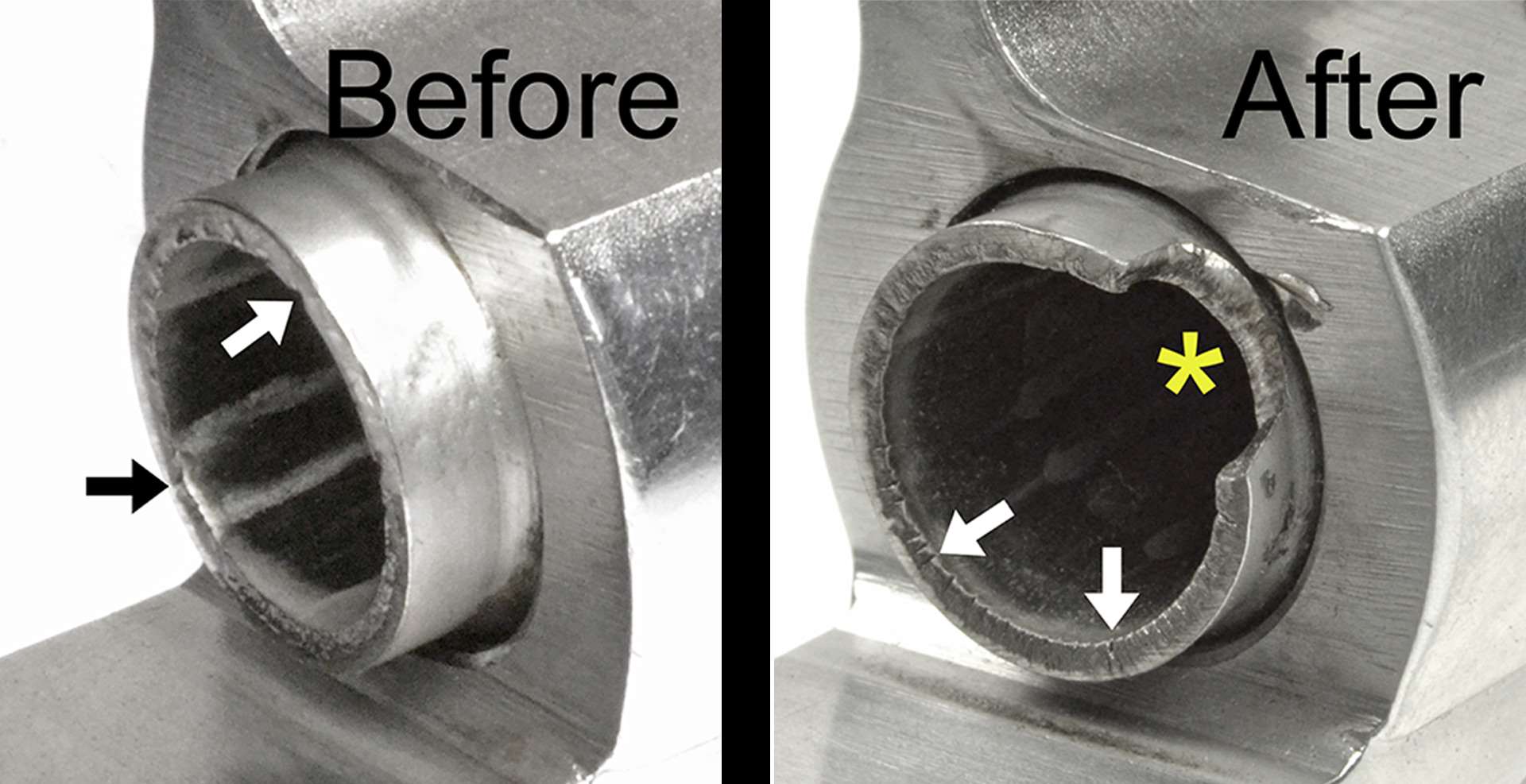
I looked the gun over and it only took a second to see it. The forcing cone didn’t just crack, it blew out. A chunk of it measuring about ¼ by ⅛ inch was missing. It blew off with considerable force. There were gouge marks on the yoke and cylinder face. It’s a good thing none of my body parts were in the path when it failed.
Forcing cone failure of any kind is rare. Most revolver shooters will never experience this. But it’s something to keep an eye on. And if you’re in the market for a used revolver, be sure to inspect the forcing cone for a crack and gas erosion. Even the seller might not be aware of it if they don’t know what to look for.
Erosion itself does not mean the forcing cone will break, though extensive thinning of the forcing cone will certainly increase the chance it will. It might be a good idea to stop shooting high-pressure ammunition in a gun with obvious erosion for the benefit of a longer life.
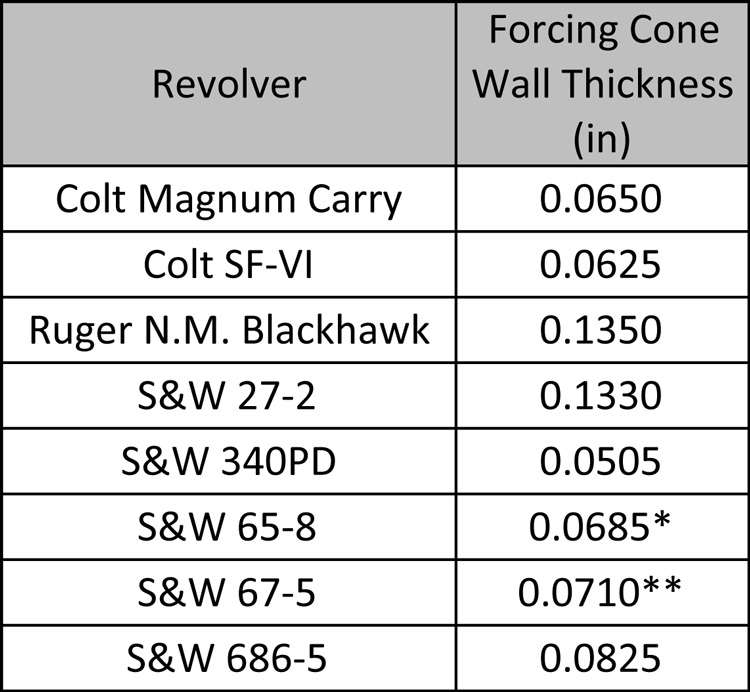
Resources
- Supica, J. and Nahas, R. 2016 Standard Catalog of Smith & Wesson, 4th Edition. Gun Digest Books, Appleton, Wis.
See more: Accuracy Testing: Shortcomings Of The Five-Shot Group


































